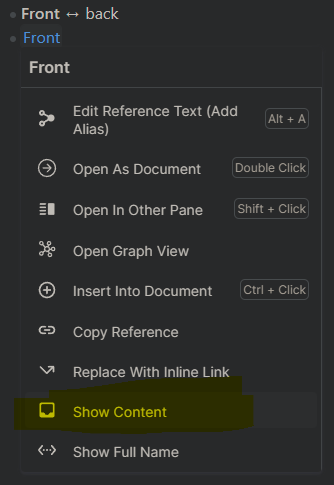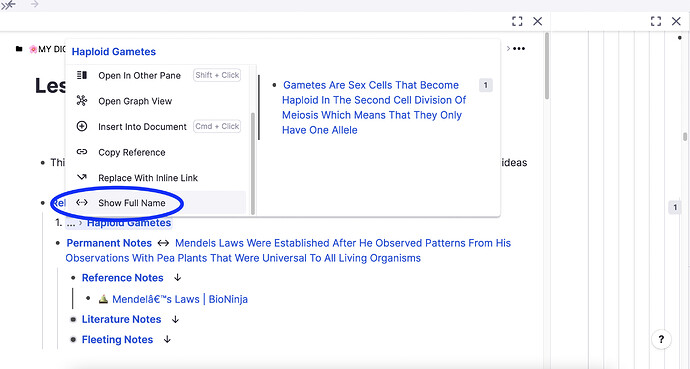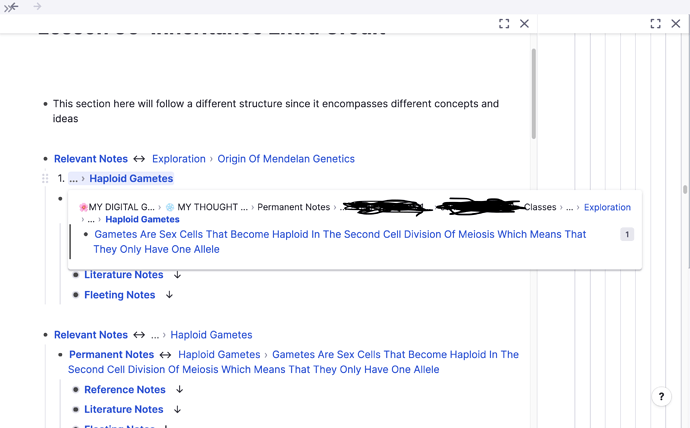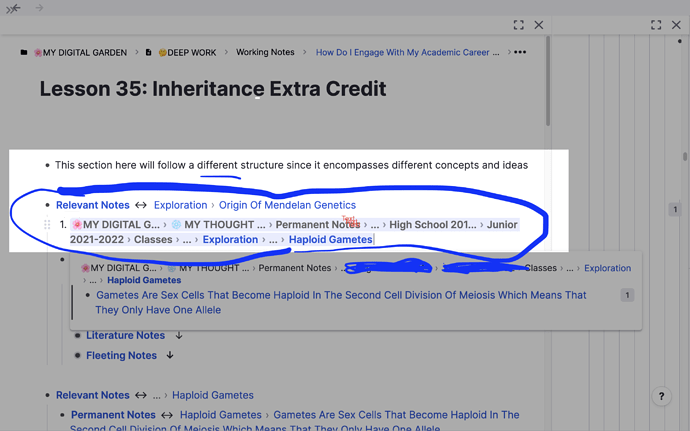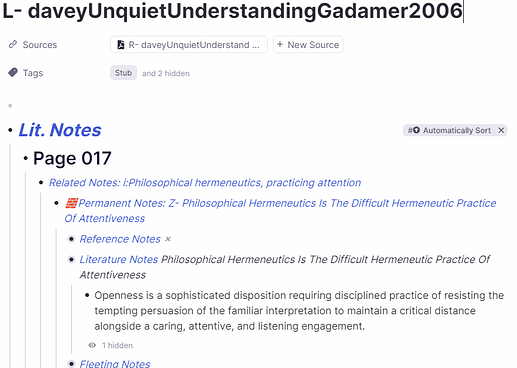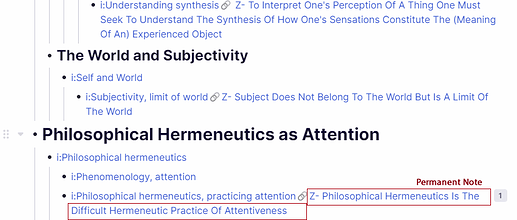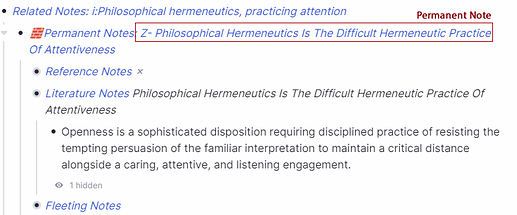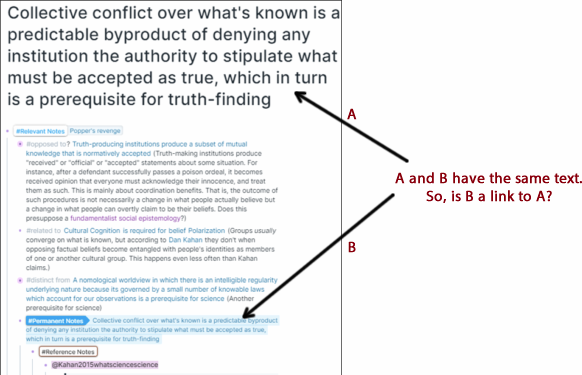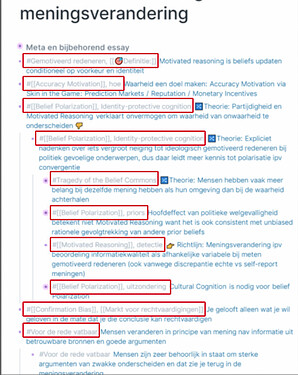I honestly think it’s pointless to get this bogged down in the technicalities of the apps rather than the actual usage of the slip-box, especially when trying to map things one-to-one across apps that aren’t exact clones of each other (though Roam and RemNote are relatively close). Nonetheless, I will give my opinion on what they do, why they do it, and how to do it in RemNote. Needless to say, this is all extrapolation and speculation, and based on hazy memories and hasty re-skimming at that, so feel free to mentally prefix every following sentence with “I believe” or “If I recall correctly”.
Both Haan and van Doorn assume that most permanent notes will be stored at the top level or else in Roam’s daily note, i.e., the location of the actual permanent note within the system does not matter. In order to get to the notes, they both add a keyword to their title, which in RemNote could be done with either a tag or reference, since they would both be shown and link to they same rem. The practical differences are that references are more explicitly visible (tags are liable to get rolled up into a useless number icon if applying multiple), while tags allow for easier filtering if there are multiple tagged notes in the same document (filter menu rather than search portal query). In order to replicate Luhmann’s setup, the keywords themselves are stored in a simple list in a separate location, the index, so that is where all the keyword backlinks will lead. Keynotes are populated with references to permanent notes that are indented using the outliner. Alas, you may not indent under portals in RemNote, so references are your only option there.
Haan decides to keep all his fleeting and literature notes along with the permanent ones as well as to bring in other related permanents close by. Sadly, there is no way to remove notes from search in RemNote, but you can manipulate the search prioritisation somewhat by making your permanent notes into concepts (either by using the title as the front or just raw ctr+alt+c) and leaving the others as plain rem. For related permanents you can either use references, which may be shortened using aliases, or portals, which allow easy access to the children.
Van Doorn functionally adds Universal Descriptors in order to sort his connections between notes/related notes. From what little I know of Roam’s internals, the reason to use a reference prefixed with # rather than a pure [[ is to be able to style just that tag with Custom CSS. Obviously, in RemNote you can just colour the original Universal Descriptor using the highlighter, or, for more advanced appearance changes, tag it with a rem that has text that would apply the snippet (see detailed example).
(the following is my own advice rather than trying to decipher other people’s, which may or may not be of interest)
The main difference (for Zettelkasten purposes, so excluding flashcards) until recently between Roam and RemNote was the existence of queries, thus limiting what could be done with tags, and, by extension, the usability of having hundreds of notes at the top level with no easy ways to grab subsets of them (except for keynotes). For my own workflow this resulted in having to use portals and the outliner to store permanent notes that apply to multiple topics directly under them (along with keynotes and universal descriptors) rather than building a centralised keyword index. I may re-evaluate and shift to a tag approach now that queries are finally in, but there is something nice in being able to easily mix hierarchical flashcards with looser interconnected permanents (though also hampered by the inability to indent under portals). Of course, the different note tiers do have to be clearly distinguished - I prefer using an emoji and making permanents into titled concepts to use them directly as clauses in new notes.
Again, all these details are ultimately up to you and have little bearing on the actual usage: as long as the notes are usable by themselves while also being connected and able to be surveyed, use whichever feature you find most convenient. Maybe you love the outliner, so you go light on keynotes of references, preferring to arrange the notes themselves. Maybe you’re a tag maniac, so you have a few permanent queries that pick only permanent notes with a specific field/certainty threshold keyword. Maybe you enjoy a graph, so you keep a few entrypoint keynotes and open their local graphs to get to all other notes. In every case, the goals are to enable yourself to easily produce a new note if one is obviously missing, quickly and accurately connect two notes that contain connected ideas, and see the rough shape of the arguments without having to reread every word.
Apologies if that isn’t specific or concrete enough, but I truly don’t think you’ll have a better guide than your own usage - after all, it will always ultimately be your own words you’re writing, connecting, or surveying.




